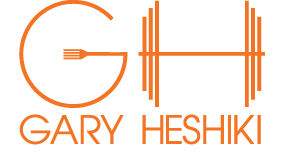3 Things All Desk Workers Need to Do Daily
It works...in theory
I'll bet by reading this title you just sat straight up in your chair. Spending 8 hours behind a desk and then hitting the gym with these common issues is a sure-fire recipe for an overuse injury.
I've outlined the top three problems and a few videos showcasing mobilization drills to help undo some of these dysfunctions before you go deadlift the car that parked too closely behind you out of the way.
(You can interchange desk worker with "People who spend 2 hours commuting every day")
NEED: Deep Diaphragm Breathing
Individuals who work desk jobs often exhibit shallow breathing. This person ends up with a dysfunctional breathing pattern overusing the secondary muscles like scalene, sternocleidomastoid and pec minor. This will impair your ability to properly raise your arms overhead which will the limit your pull-ups and all pressing motions.
Your chest rises as the intercostal muscles contract. Yet, the stomach is drawn in by activation of the tranverse abdominis muscle and the diaphragm is not engaged. And while this position looks better in trying to appear slimmer, it also reduces the total amount of oxygen available by only partially expanding the lungs. This also results in weaker core stabilization. Which you can imagine is a disaster when our desk worker attempts squats with only half their available core stability.
Break up the adhesions with a lacrosse ball before moving onto the back to wall shoulder flexion mobilization. When performing both of these be sure to give a nice hard exhale each time you extend. This is exhibited in the final video in the section by Dean Somerset when he's performing dead bugs.
When learning how to properly engage the core and integrate movement, my go-to is the dead bug.
NEED: Thoracic Extension
To go along with a rounded forward head posture is an excessively kyphotic (rounded) thoracic spine and internally rotated humerus. This will likely lead to issues with scapular positioning as well. I won't go into too much detail here since poor thoracic positioning also impairs hip position.
I do however advocate both t-spine foam roller extensions and the bench t-spine mobilization below. Combine the movement with the deep diaphragmic breathing and you're on your way to moving better!
For a more in depth breakdown, Jill Miller breaks down how the aforementioned dysfunctional breathing affects thoracic positioning.
NEED: Hip Mobility
Being seated all day you'll end up with excessive lordosis (anterior pelvic tilt) which often manifests itself in lower back pain/stiffness. If you notice there's a degree of overlap in all of these problems. This leads to poor alignment which results in subpar performance in almost every lift including upper body ones too.
Our back extensors (mainly the iliocostalis lumborum and longissimus thoracis) help to counteract shear force, but they are either "locked" at the mid-back or "shut off" from flexion. In his book "Ultimate Back Fitness and Performance," Stuart McGill notes that the ability of the back extensors to counteract shear force is a function of spine curvature.
A neutral spine shows the angle of the extensors are at 45 degrees. However when the spine is flexed it reduces the angle by 10 degrees anteriorly and shear forces cannot be counteracted. When you have poor thoracic mobility, you'll most likely end up with poor hip position when it comes to squats and deadlifts; and thus likely open yourself up to injury.
Below are two of my favorite drills to help open up the hips, the split-stance kneeling adductor mobilization and 1/2kneeling hip flexor stretch.
Things to Purchase


